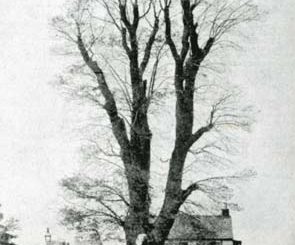King Arthur
The legend of Arthur is one of the most popular and well known of British legends. From early brief passages to the mythic epic we know today, the story of Arthur has long been a source of inspiration to writers, poets and artists. He has become associated with hundreds of places in the British Isles and France, some of which will be listed in the gazetteer section in the coming months.
 Historically Arthur belongs in the 6th Century AD, in the period following the Roman withdrawal. He may have been a British war chief, who effectively stemmed part of the Saxon invasion in a series of battles.
Historically Arthur belongs in the 6th Century AD, in the period following the Roman withdrawal. He may have been a British war chief, who effectively stemmed part of the Saxon invasion in a series of battles.
The first real mention of Arthur is by a monk named Nennius, who was living in Bangor in the 9th century, (although a monk named Gildas writing in the 6th century mentions Badon and Aurelius Ambrosius). Nennuis mentions Arthur as the Dux Belorum, which effectively means war leader. He describes twelve battles, one in which 960 men die by Arthur’s hand. Nennius claims that his sources came from a number of documents he had collected. He does not mention them by name, and it has to be taken into account that he was writing nearly 400 years after the supposed events, about a time from which little written documentation exists.
After Nennius the story seems to have been expanded upon and to have travelled around the country by word of mouth. By the beginning of the twelfth century many of these tales had been collected and put together by William of Malmesbury.
The next significant leap forward for the legend was in 1136AD when Geoffrey of Monmouth wrote about Arthur in The History of the Kings of Britain. Geoffrey was something of a romantic, and it is difficult to separate what came from his fertile imagination, and what came from documents he claimed to have in his possession.
Geoffrey’s account forms the backbone for the popular version of the legend, a brief summery of which can be found (here) . Geoffrey’s version became very popular, and had several political ramifications. The new ruling elite at the time were the Normans, who had invaded in 1066 and now ruled over the mainly Saxon population. They now had a story to link them with the original inhabitants, after all the Saxons had taken over from Arthur’s people.
The next writer to take the gauntlet was Thomas Malory, who shows how each successive writer placed the legends in their own time period. Malory wrote the Morte de Arthur from his prison cell in the Tower of London in 1485. He drew together the older tales, and placed them firmly in the chivalric period, which is most often depicted in films based on the legend.
The legend of Arthur has amalgamated into the British Landscape, and many places now vie for an Arthurian heritage. We have Arthur in Glastonbury, Cornwall, Wales, Southern Scotland and Shropshire. He fills the role of an archetypal hero who will one day return at the darkest hour, to lead his people to victory.




Re: King Arthur
There is a very important but little known connection to Worcestershire regarding the Arthurian legends. This is the presence at Arley Redstone near Stourport On Severn of the hermit preacher Layamon who in the 13th century made the first translation of the legends into English. What is more interesting is that the tales he rendered into the unfashionable English dialect of the region seem almost certainly to derive from assimilated Celtic sources which pre-date those of Geoffrey of Monmouth and Robert Wace, and so constitute a little known treasury of ancient Brythonic legends. If anyone is interested in this aspect of the Arthurian myth and the so called "Matter of Britain" I have just completed a book about the subject and if they wish I can forward the details to them. The opening chapters are being considered for an article by this site presently.